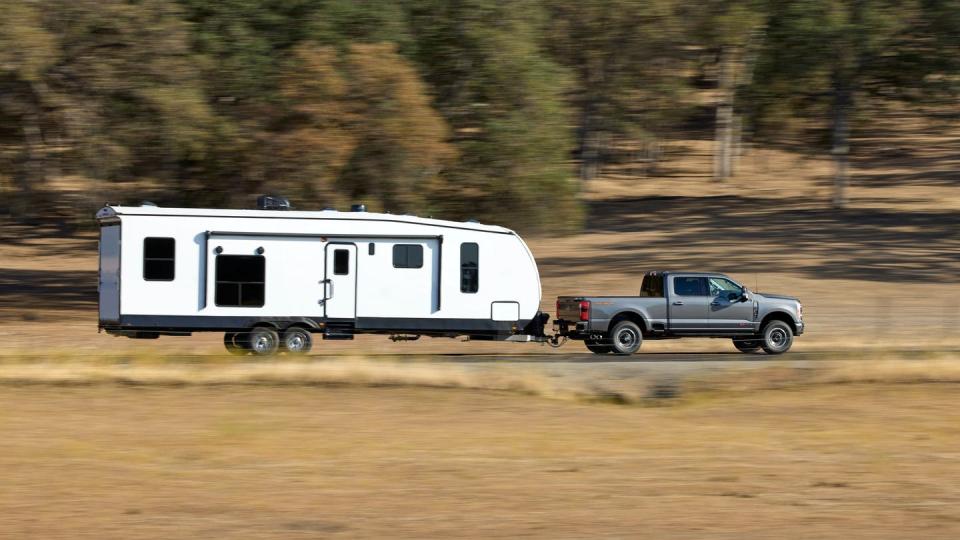Ford Aims to Beat Chinese Brands with Small EVs Using Chinese Batteries

Ford is doubling down in its partnership with Chinese-based battery manufacturer CATL to build small, affordable electric vehicles in the US.
Ford’s $3.5-billion EV battery factory going up in Marshall, Michigan, about 100 miles west of Detroit, uses technology and services from CATL.
Altogether, Ford Motor posted second-quarter revenue of $47.8 billion, net income of $1.8 billion, and adjusted earnings of $2.8 billion.
Model e volume is down 23% at Ford Motor Co., and revenue fell 37% for the second quarter of the year. Ford’s electric-vehicle business unit’s $1.1 billion loss for the quarter is the same as its loss for the second quarter of 2023, and EV sales were down from the first quarter, though Ford remains number-two after Tesla in the US.
But Ford is doubling down in its partnership with Chinese-based battery manufacturer CATL to build small, affordable electric vehicles in the US.
The Ford Model e team is “getting much more scrappy” at cutting costs on its next generation of EVs, CEO Jim Farley told Wall Street analysts in the automaker’s second-quarter earnings call Wednesday.
“We clearly see China and Tesla as the cost benchmark,” he said.
Ford’s $3.5-billion EV battery factory going up in Marshall, Michigan, about 100 miles west of Detroit, uses technology and services from Chinese-based Contemporary Amperex Technology Limited (CATL) and is scheduled to begin operations in 2026 and employ about 2,500.
Model e is developing small EVs, Farley said, because the business case for electric vehicles is opposite that of internal-combustion vehicles. “We believe smaller, more affordable vehicles are the way to go for EV in volume,” Farley said.
“Why? Because the math is completely different than ICE. In ICE, the business we’ve been in for 120 years, the bigger the vehicle, the higher the margin. But it’s essentially the opposite for EVs. The larger the vehicle, the bigger the battery, the more pressure on margin because customers will not pay a premium for those larger batteries.”

Farley said a platform designed for EVs allows better coordination between the battery and the systems connected to it.
The flip side of Model e among Ford’s three business units is Pro, which posted $17 billion in revenues for the quarter and $2.6 billion in earnings before income taxes (EBIT), up 15.1% over Q2 of ‘23. For the first half of the year, Pro’s EBIT is $5.6 billion, up 15.9%.
When Ford split its business in three a few years ago, its Blue unit (ICE Mustangs, F-150s, Lincolns, etc.) net income levels were about equal to that of Pro, but the Pro commercial business has since been pulling well ahead.
While Blue’s revenues were higher than Pro’s for the second quarter, at $26.7 billion, EBIT was not quite half of Pro’s, at $1.2 billion. Ford Blue’s EBIT for the first half was $2.1 billion.
Altogether, Ford Motor posted second-quarter revenue of $47.8 billion, net income of $1.8 billion, and adjusted EBIT of $2.8 billion.
Ford can’t build enough Super Duty trucks and Transit vans to meet demand, and Pro software subscriptions are up 35%. Commercial customers are quicker to adopt all sorts of new technologies than are individual customers, Farley said.
Ford Pro now has more than 765,000 paid subscriptions he said, adding, “We’re targeting $1 billion in revenue next year for (Pro) software.”
Last week, Ford announced it will add a third North American assembly plant for its F-Series Super Duty trucks to help meet demand, and one investment analyst on the call asked which powertrains will be available on the new truck models.
Farley declined to give details, but said the Super Duty is a “multi-energy platform” similar to the F-150 and the Transit van, which means gasoline and gas-electric hybrid, though possibly no diesel at that plant. Considering Model e’s small EV strategy, it seems unlikely those Super Duty trucks would be all-electric.

The question of stock buyback also came up, with one analyst noting Ford’s stalled stock price and high profitability, resulting in a high price-to-earnings ratio.
“I have to tell you that it’s hard for people to understand these exciting uses of capital,” Farley replied, “but we have new companies to invest in,” including non-automotive companies.
“Ford Pro is a very high percentage of this company’s profit.” Just 24% of aftersales gear added to Pro commercial trucks comes from Ford’s dealers, and Farley wants to increase that share.
Another analyst asked the requisite question of what happens to Ford’s EV and hybrid strategy if EV-skeptic Donald J. Trump wins the November 5 presidential election.
Farley pointed to Ford’s flexibility and long-term strategy for electric and electrified vehicles over compliance requirements.
He said the company believes Chinese EVs “will eventually wash over the entire industry in all regions. We believe as a company, even if there were short-term adjustments we can make to a compliance-led lower requirement lineup, we’re not going to approach it that way.” Farley replied.
He said, “Many Americans would find an electric vehicle lowering their cost.... It is not a strategy where we handicap the presidential elections or the next one, or the next one, and see what we can get away with, with the EPA. That is not how we run Ford, because Ford didn’t go bankrupt. We have been enduring. And the only way we believe to be enduring is to make money on small EVs. And commercial.”
Ford seems convinced small EVs are the path to a sustainable battery-electric market. Do you agree? Please comment below.

 Yahoo Autos
Yahoo Autos 